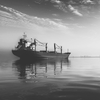Helm Report Says Workboat, OSV Safety Compromised
Some 50% of crews working on offshore support vessels are willing to compromise safety rather than say ‘no’ to clients or senior management, while nearly 80% believe commercial pressures could influence the safety of their working practices.
The chilling findings, released to coincide with this week’s International Maritime Organization Maritime Safety Committee meeting, come from a new report on workboat and OSV safety commissioned by operations and maintenance management software specialist Helm Operations.
‘The Impact of Crew Engagement and Organizational Culture on Maritime Safety in the Workboats and OSV Sectors’ is the first maritime safety study specific to workboats and OSVs and will be finalized in time for World Maritime Day 2015, on September 26.
The independent report will summarize six months of research by Dr Kate Pike and Emma Broadhurst of Southampton Solent University. It draws on original analysis of Port State Control detention records, feedback from 50 offshore companies, incident case studies, and input from leaders in best practice.
“This is a major contribution to knowledge in the industry, highlighting the link between the human element and safety performance in this distinct sector,” says Ron deBruyne, CEO and Founder of Helm Operations. “It tests often repeated regulatory assumptions, establishes the realities of workboat and OSV safety, and provides key recommendations aimed at improving maritime safety.”
Despite the inherently risky nature of their work, many workboats are not bound by SOLAS or the International Safety Management (ISM) Code. Both the Paris and the Tokyo Memoranda of Understanding (MOU) data show that 27% of workboat deficiencies relate to certificates and documentation, the report says.
“This report identifies shortcomings in current safety cultures, and makes recommendations on how the workboat and OSV sectors can enhance and audit safe working practices,” says deBruyne.
An online survey drawing on 50 key offshore companies saw 34% of respondents saying their company needed to offer additional operational and technical training. Worryingly, 50% found it difficult to say ‘no’ to a client or senior staff demanding actions that might compromise safety. Some 78% of respondents believed that commercial pressures could influence safety.
“We’re concerned that the research also confirms how under-reporting of near misses can undermine an entire safety culture,” says deBruyne. “This is partly due to the repercussions of reporting. Better safety management procedures, improved safety culture and crew wellbeing mean lower workboat and OSV deficiencies and detentions.”
To support this contention, the report identifies a set of eight safety criteria to help companies establish safety management systems that follow the principles set out in the ISM Code. It offers recommendations on communication; empowerment of employees; feedback systems; mutual trust; problem identification; promotion of safety; responsiveness; and safety awareness.
‘The Impact of Crew Engagement and Organizational Culture on Maritime Safety in the Workboats and OSV Sectors’ will be available on September 26, to coincide with World Maritime Day.










